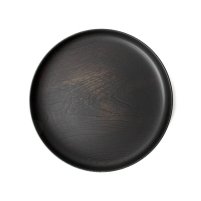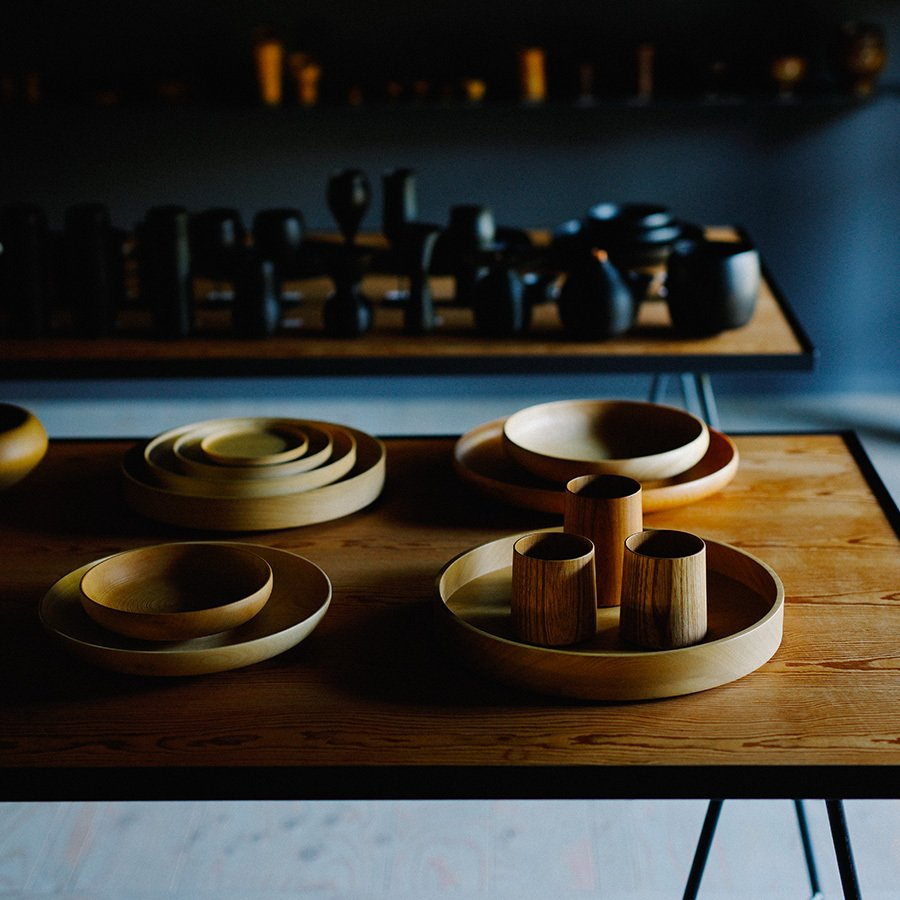Used for thousands of years in Japan to coat objects from crockery to furniture and buildings, urushi is the purified sap of the Asian lacquer tree. When dry, the lacquer is both heat and water resistant, providing protection and strength to underlying materials, very often wood, but also bamboo, paper or leather. In Japanese lacquerware itself can be referred to as urushi as well as shikki (lit. “urushi vessel”), and with the development of acrylic resin in the last century, objects coated in synthetic lacquers, such as food-safe polyurethane, are considered urushi/shikki too. Pure urushi is transparent, while the black and red lacquers most associated with urushi are achieved with the addition of mineral pigments. Over this traditional decorative details such as gold maki-e “sprinkled pictures” or raden “shell inlay” can also be applied.
Yamanaka Shikki 山中漆器
Produced in the Yamanaka Onsen hot spring district of Kaga city, Ishikawa prefecture, Yamanaka lacquerware dates back to around 1580, with the arrival of a group of woodworkers from nearby Echizen, who specialised in the art of hikimono-kiji – turning wood on a lathe. The goods they produced were sold as souvenirs to onsen tourists, and the area became known for its fine lacquerware, particularly its tea ceremony accessories. Yamanaka shikki is characterised by round utensils with transparent lacquers that highlight the natural beauty of the wood grain, as well as kashokubiki (加飾挽き) literally "decorative lathing", a unique engraving technique that first began to appear at the end of the Edo period (1615-1868).















